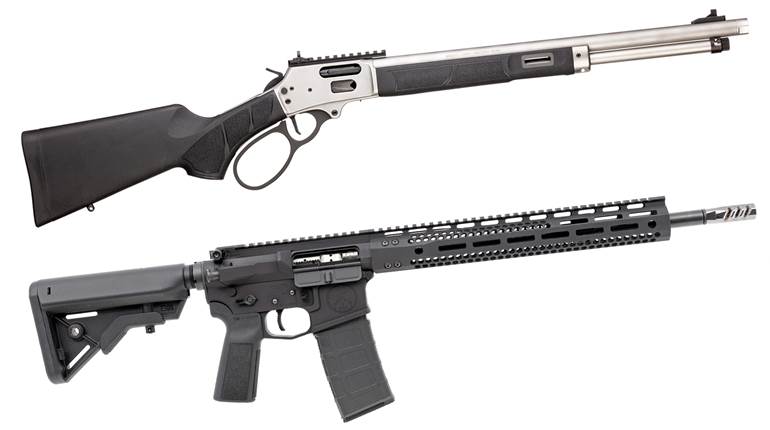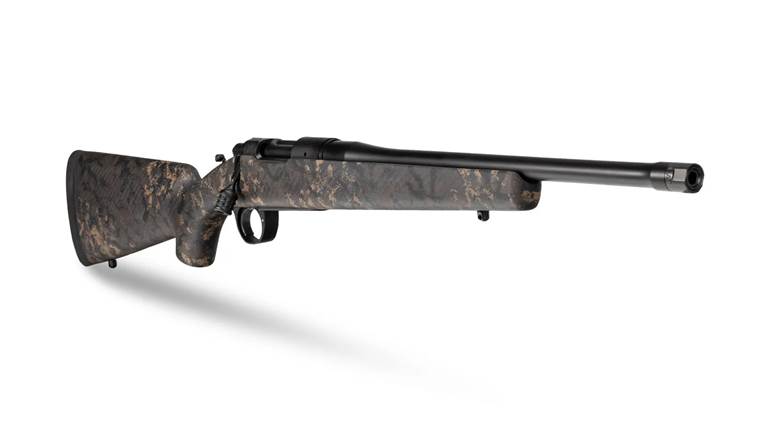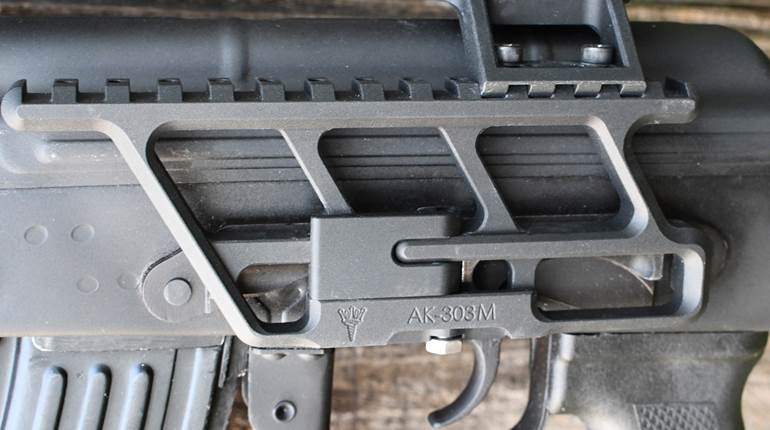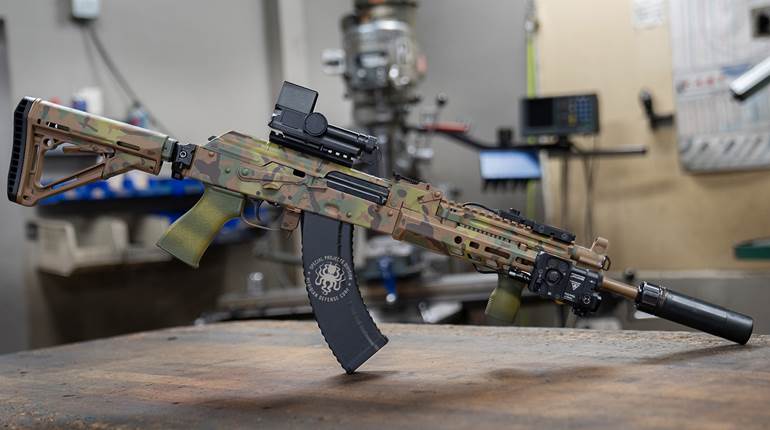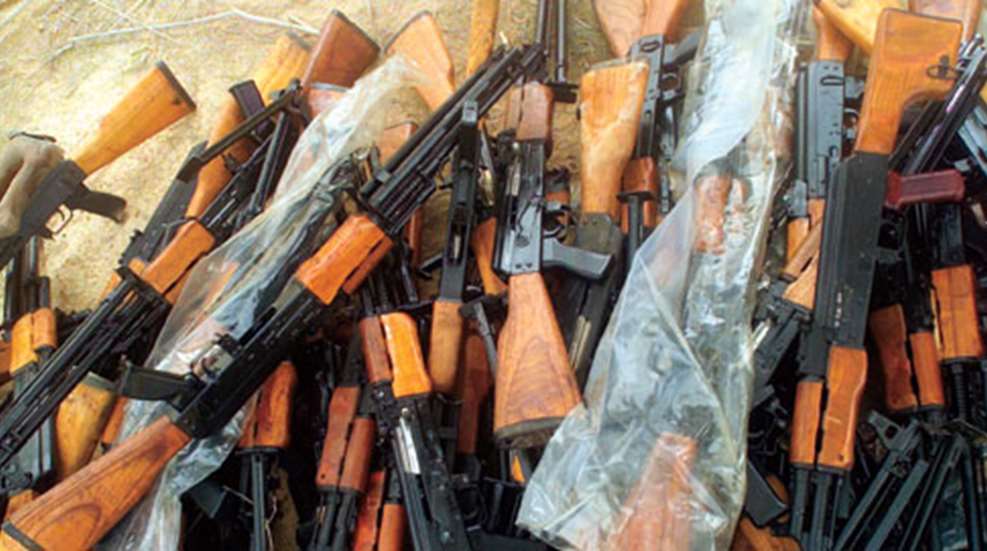
Although Iraq manufactured its own variants of the Avtomat Kalashnikov rifle, AKs from every nation can be found in that country. Many Iraqi arms are named after ancient battles, and Iraqi AK variants are designated Tabuk, so named after the ancient Battle of Tabouk (also known as the Battle of Tabuk) that took place in October A.D. 630. The Iraqi government received a substantial amount of parts and technical assistance in setting up its AK production from Yugoslavia.
As a result, Iraqi-made AKs are nearly exact copies of Yugoslavian pattern AKs, including barrels that did not have their bores and chambers chromium-plated. The primary Iraqi arms factory was located east of Bi’r Musammad, Babil, Iraq, and the facility is now closed.
Assault Rifles
Iraq originally purchased a number of AK rifles from East Germany and Romania before starting manufacture of its own stamped-steel receiver 7.62x39 mm variant called the Tabuk; Iraq never produced a milled receiver AK rifle. The Tabuk bears a strong resemblance to the Yugoslavian M70B1 series with the heavy-duty RPK-type receiver and trunnion. Some Tabuks were fitted with integral flip-up sights on their gas blocks for launching rifle grenades. When the sight is raised, it automatically cuts off the barrel’s gas port, stopping the flow of gas to the piston. Tabuks with this feature were assembled with parts supplied by Yugoslavia. Like their Yugoslavian counterparts, the rear pistol grip is made of black plastic. The handguards are also constructed on the Yugoslavian pattern, having three cooling vents on each side instead of the normal two found on other AKs. The buttstock is attached by a single screw that extends through the center of the stock into the back of the receiver. Reportedly, East Germany also had a hand in assisting Iraq with establishing its AK rifle production.
In keeping with the Yugoslavian manufacturing methods, the 16.3-inch-long Tabuk barrels are not chrome-lined. Selector settings are marked in Arabic: The top reads aman for “safe; the center position Sali means “continuous” (full-automatic); and the lower position reads mufrad, meaning “single” (semi-automatic). The overall length of the rifle is 35.43 inches, and the loaded weight is 10 pounds, 2 ounces.
There is an under-folding stock Tabuk variant in 7.62x39 mm that is the same as the full-stock arm except for its overall length of 35.03 inches with the stock extended and 25.19 inches with the stock folded. Loaded weight is 9 pounds, 6 ounces.
According to an Iraq factory brochure the Tabuk is also offered in 5.56x45 mm NATO. The published cyclic rate is 580 to 660 rounds per minute. Loaded weight is 9 pounds, 8 ounces for the fixed-stock model and 9 pounds, 4 ounces for the folding stock variant. Magazine capacity is listed as 30 rounds.
A compact Tabuk assault rifle was also made in Iraq. It has a Soviet-pattern under-folding metal buttstock and a short, 12.6-inch barrel fitted with a unique muzzle brake. The handguards are wood with two cooling vents. The gas block and front sight tower are one part. The rifle is available with a special 20-round magazine or a standard 30-round capacity steel magazine. The overall length is 31.5 inches with the stock extended; the folded length is 21.85 inches. Loaded weight with a 30-round magazine is 8 pounds, 15 ounces.
Sniper Rifles
The Tabuk stamped receiver semi-automatic sniper rifle is similar to the standard Tabuk except for its 23.62-inch-long barrel and long-prong-style flash suppressor. The rifle has a standard buttstock that has been skeletonized to reduce its weight, and a rubber recoil pad is fitted to the buttstock. The stock is attached to the receiver by a single bolt. The rear iron sight is adjustable for elevation and windage. Special 15- or 20-round magazines are used to permit the shooter a low profile for shooting from concealed positions. The limited range of its 7.62x39 mm cartridge makes the Tabuk more of a squad-level designated marksman rifle than a dedicated sniper rifle.
Made in the village of Al Khalis, Tabuk sniper rifles can be encountered with a variety of different telescopic sights, including the Soviet PSO-1 or the Romanian LPS scope. The overall length is 43.3 inches. Loaded weight with a 15-round magazine and scope is 10 pound, 6 ounces. The Lion of Babylon set against a pyramid is engraved on left side of the rear sight block. The statue of the Lion of Babylon depicts a lion standing over a human figure, representing the legend of Ishtar, the ancient goddess of fertility, love and war. The actual Lion of Babylon statue was in the southern Iraqi city of Basra. On July 29, 2007, the statue was destroyed when insurgents planted and detonated an explosive charge under the statue.
The Al Kadesiah (pronounced “al kaad i see ya”) is a unique Iraqi 7.62x54 mm semi-automatic sniper rifle design that is a cross between the Soviet SVD and the Romanian PSL. Like other Iraqi arms the Al Kadesiah was named after an ancient battle, in this case the Battle of al-Qadassiyah, which took place around A.D. 637. Saddam Hussein referred to the battle in a speech calling the Iran-Iraq War the Second Battle of al-Qadassiyah.
The Al Kadesiah uses a 1.5 mm-thick, stamped steel receiver with a skeletonized, laminated wooden thumbhole stock fitted with a rubber recoil pad. The gas system is an impingement system similar to that used in the Russian SVD, but it does not have a gas regulator valve. The Al Kadesiah uses the Kalashnikov rotating bolt system, but the bolt has three lugs instead of two, and it rotates in the opposite direction. The long tail of the bolt has three longitudinal flutes to assist reliability in sandy environments. The trigger group is also similar to that of the SVD, but it is slightly wider and, therefore, not interchangeable with the milled-receiver Russian SVD. The barrel is 24.48-inches long with four grooves and a 1:10-inch right-hand twist. The muzzle has a five-prong flash suppressor 3.75 inches in length. The distinctive 10-round magazine has an impression of a palm tree stamped into its sides. Although the magazines are similar in appearance to those of the Russian SVD or Romanian PSL, they are not interchangeable. The overall length of the Al Kadesiah is 48.42 inches, and its weight with scope and a loaded 10-round magazine is about 9 pounds, 14 ounces.
For mounting optical devices, a metal rail is riveted and spot-welded to the left side of the receiver. A variety of telescopic sights have been used, including the Yugoslavian OM-M76 4X, the Soviet PSO-1 and the Romanian LPS Type 2 scope. The rifle has AK tangent-type iron sights calibrated out to 1,200 meters in 100-meter increments; the rear sight is adjustable for windage and elevation. The adjustable post-type front sight is also an AK design.
The receivers are marked “AL Kadesiah 7.62x54 mm, Made in Iraq.” It should be noted the name has been spelled “AL Kadesih,” in an English-language Iraqi factory brochure the name is spelled “AL-Kadisia” (Arabic is a transliterated language often resulting in many different spellings of the same words; nothing is exact.) Many of these rifles were gold-plated (a bad idea for a sniper or any military arm) by order of former Iraqi dictator Saddam Hussein.
AK-47 The Grim Reaper
This article is excerpted from “AK-47 The Grim Reaper,” recently reviewed in American Rifleman (October 2009, p. 42), in which author Frank Iannamico examines the seminal Russian design in a level of detail and analysis few have matched. Throughout the 868-pg., 9x11-inch hardbound book’s 17 chapters and more than 1,300 photos, drawings or illustrations, Iannamico covers not only the AK-47 and its semi-automatic clones, but also analyzes all known Kalashnikov designs and variants, by country, up through today’s AK-100 series. “AK-47 The Grim Reaper” is available from Chipotle Publishing, LLC, 631 N. Stephanie St., No. 372, Henderson, NV 89014 (702) 565 0746; Longmountain.com. The cost is $49.95 plus $12.95 shipping and handling.












